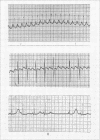Abstract
To determine the incidence of dysrhythmias following repair of isolated secundum atrial septal defect, postoperative electrocardiograms were reviewed in 292 patients. The PR interval was shortened by the 7th postoperative day (p < .05) as compared to the preoperative PR interval. Sinus rhythm only was observed in 228/292 (78%). Nine patients (3%) had a preoperative dysrhythmia. A postoperative dysrhythmia was observed in 64/292 (22%). Twenty-two (7.5%) had symptomatic postoperative dysrhythmias. A tachydysrhythmia was found in 16/64 (25%) of these. The latest occurrence of symptomatic dysrhythmia was 17 years after surgery. Currently, 7/292 (2.4%) of the patients reviewed have a pacemaker. Five of 292 (1.7%) had Holt-Oram syndrome. All five patients with Holt-Oram syndrome had postoperative dysrhythmias; two patients were symptomatic. Serious dysrhythmias may present years after repair of an atrial septal defect. Patients with Holt-Oram syndrome are at greater risk for development of postoperative dysrhythmias.
Full text
PDF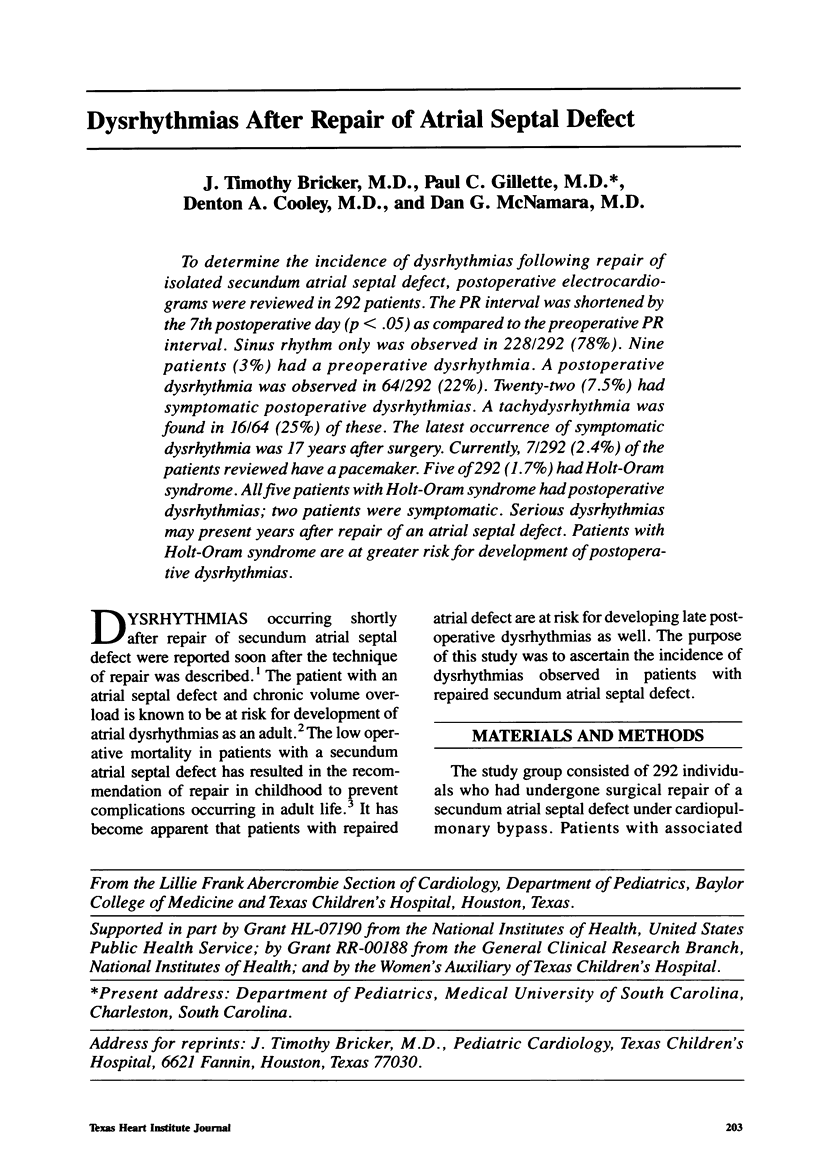
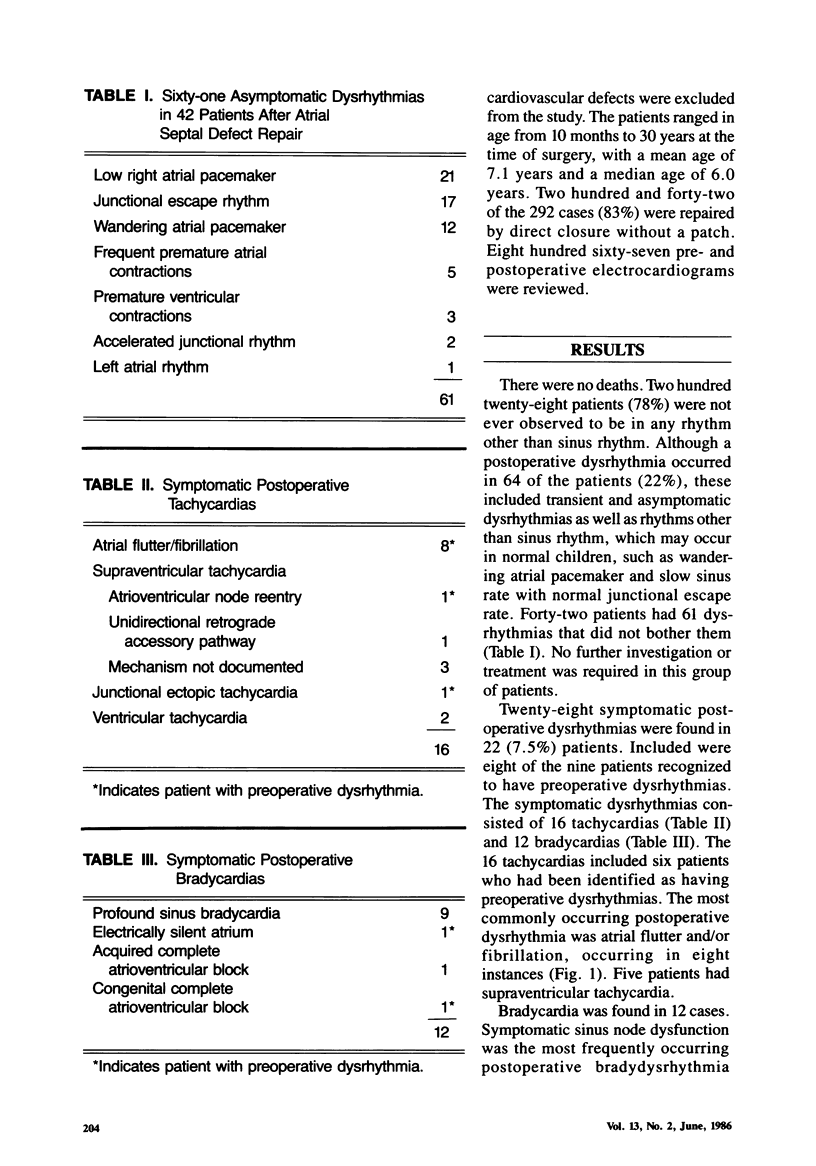
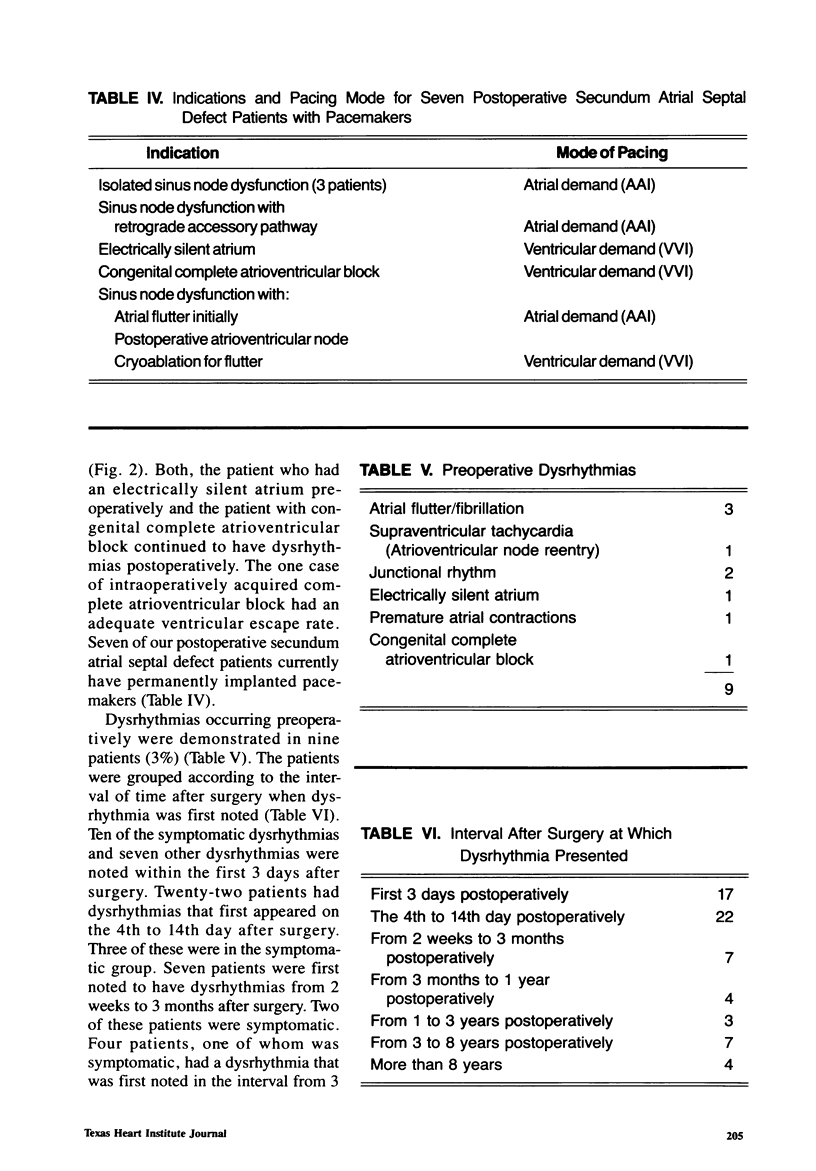
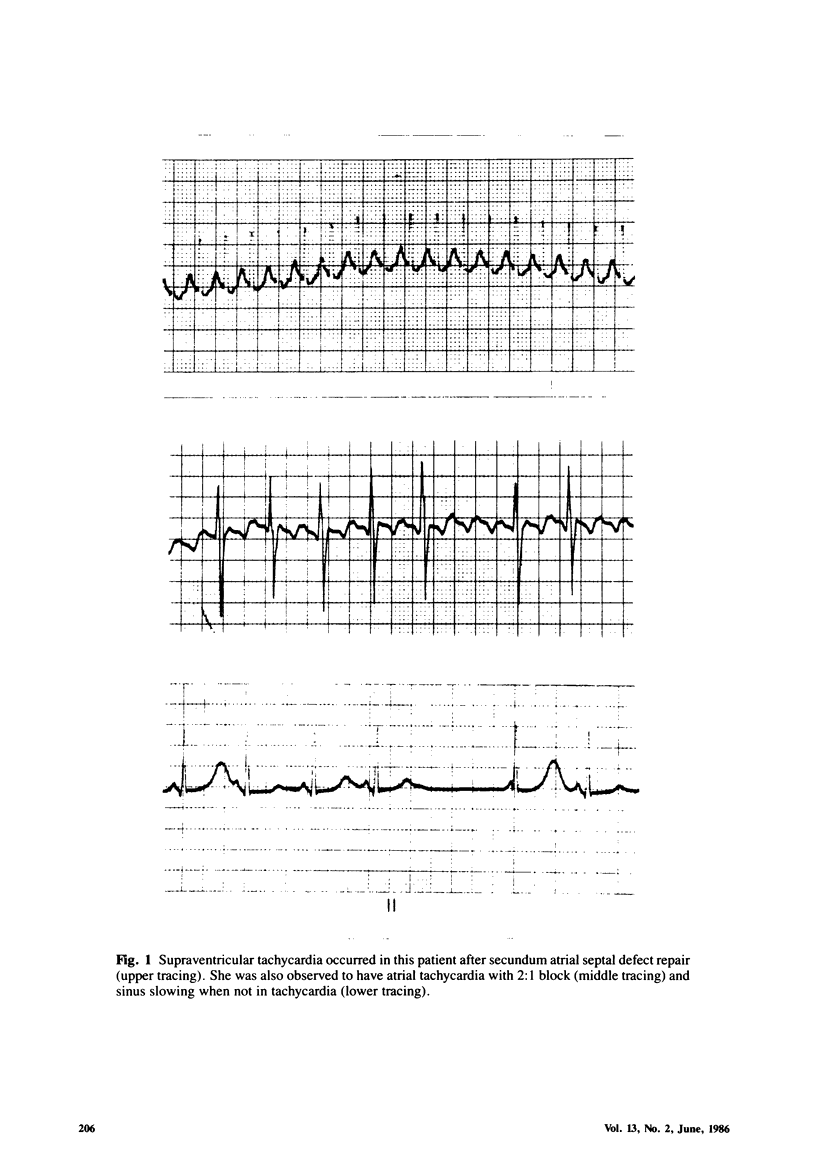
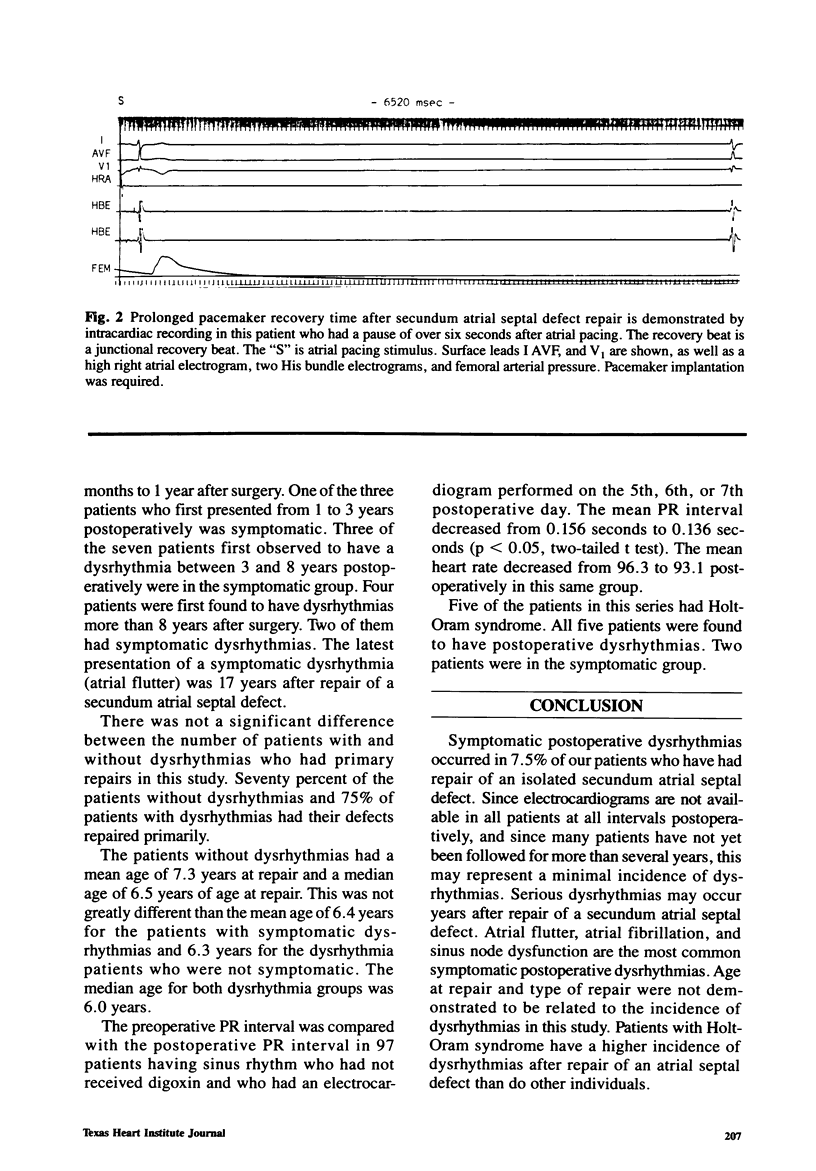
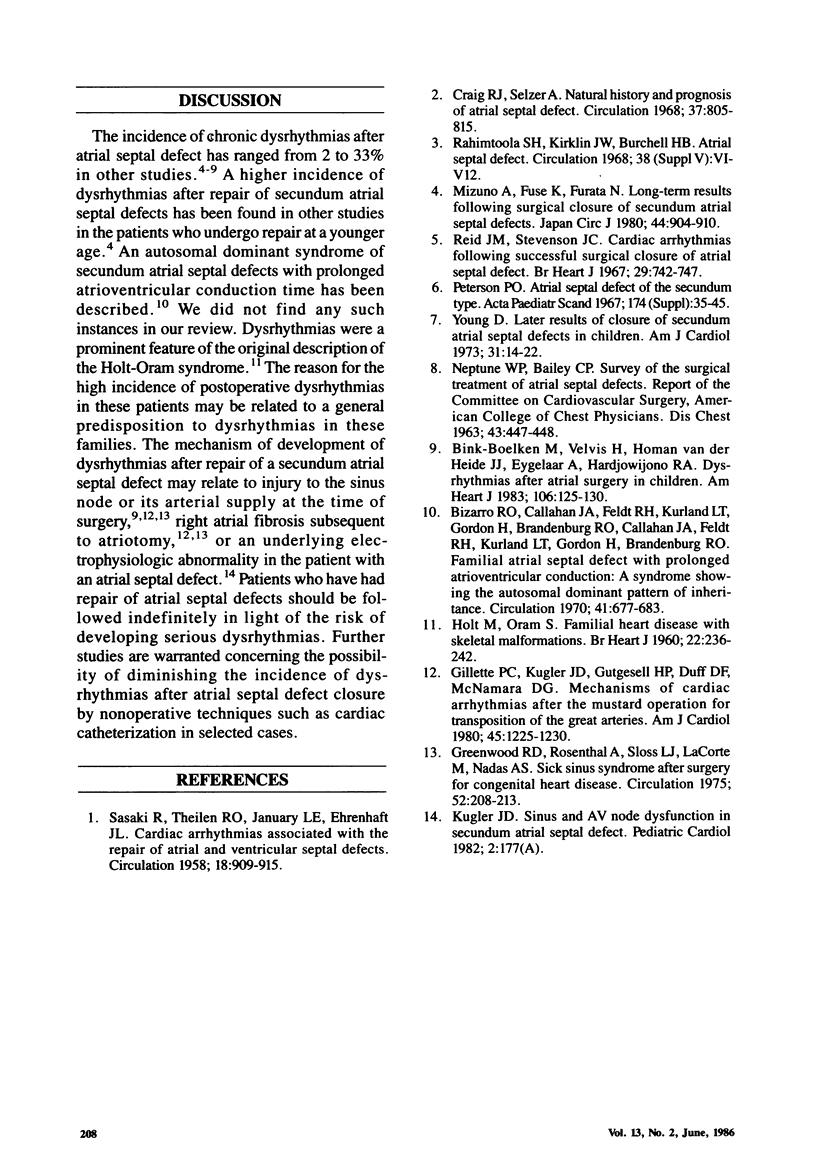
Images in this article
Selected References
These references are in PubMed. This may not be the complete list of references from this article.
- Bink-Boelkens M. T., Velvis H., van der Heide J. J., Eygelaar A., Hardjowijono R. A. Dysrhythmias after atrial surgery in children. Am Heart J. 1983 Jul;106(1 Pt 1):125–130. doi: 10.1016/0002-8703(83)90449-0. [DOI] [PubMed] [Google Scholar]
- Bizarro R. O., Callahan J. A., Feldt R. H., Kurland L. T., Gordon H., Brandenburg R. O. Familial atrial septal defect with prolonged atrioventricular conduction. A syndrome showing the autosomal dominant pattern of inheritance. Circulation. 1970 Apr;41(4):677–683. doi: 10.1161/01.cir.41.4.677. [DOI] [PubMed] [Google Scholar]
- Craig R. J., Selzer A. Natural history and prognosis of atrial septal defect. Circulation. 1968 May;37(5):805–815. doi: 10.1161/01.cir.37.5.805. [DOI] [PubMed] [Google Scholar]
- Gillette P. C., Kugler J. D., Garson A., Jr, Gutgesell H. P., Duff D. F., McNamara D. G. Mechanisms of cardiac arrhythmias after the Mustard operation for transposition of the great arteries. Am J Cardiol. 1980 Jun;45(6):1225–1230. doi: 10.1016/0002-9149(80)90482-8. [DOI] [PubMed] [Google Scholar]
- Greenwood R. D., Rosenthal A., Sloss L. J., LaCorte M., Nadas A. S. Sick sinus syndrome after surgery for congenital heart disease. Circulation. 1975 Aug;52(2):208–213. doi: 10.1161/01.cir.52.2.208. [DOI] [PubMed] [Google Scholar]
- HOLT M., ORAM S. Familial heart disease with skeletal malformations. Br Heart J. 1960 Apr;22:236–242. doi: 10.1136/hrt.22.2.236. [DOI] [PMC free article] [PubMed] [Google Scholar]
- Mizuno A., Fuse K., Furuta N. Long-term results following surgical closure of secundum atrial septal defect. Jpn Circ J. 1980 Nov;44(11):904–910. doi: 10.1253/jcj.44.904. [DOI] [PubMed] [Google Scholar]
- Reid J. M., Stevenson J. C. Cardiac arrhythmias following successful surgical closure of atrial septal defect. Br Heart J. 1967 Sep;29(5):742–747. doi: 10.1136/hrt.29.5.742. [DOI] [PMC free article] [PubMed] [Google Scholar]
- SASAKI R., THEILEN E. O., JANUARY L. E., EHRENHAFT J. L. Cardiac arrhythmias associated with the repair of atrial and ventricular septal defects. Circulation. 1958 Nov;18(5):909–915. doi: 10.1161/01.cir.18.5.909. [DOI] [PubMed] [Google Scholar]
- Young D. Later results of closure of secundum atrial septal defect in children. Am J Cardiol. 1973 Jan;31(1):14–22. doi: 10.1016/0002-9149(73)90804-7. [DOI] [PubMed] [Google Scholar]



